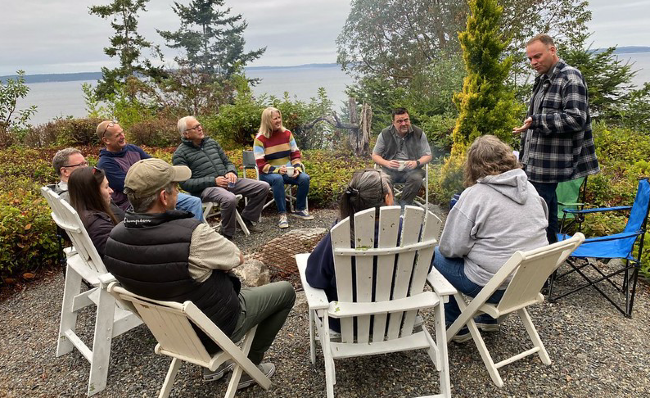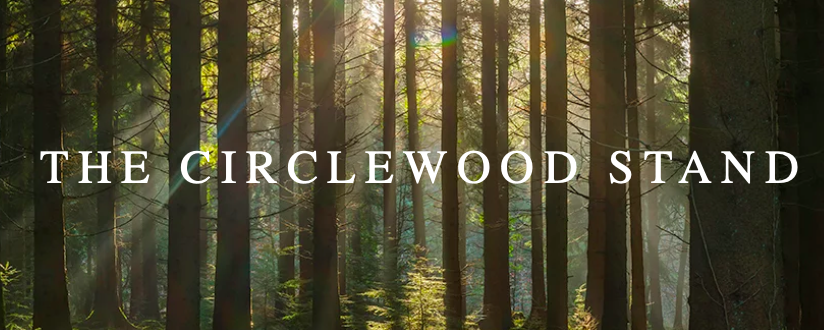As I meet people and talk about the work of Circlewood (this journal’s parent organization), one consistent response I hear is a deep hunger to be part of a community that has one or more of the following characteristics:
- An expansive understanding of, and connection to, God as creator.
- A desire to integrate care for the earth into every aspect of faith and life.
- A conviction that our current ecological crisis calls us to reform our way of life and take reparative action.
If you share one or more of these desires, you are part of what Diana Butler Bass has called (in her wonderful book, Grounded) “a spiritual revolution – people discovering God in the world and a world that is holy, a reality that enfolds what we used to call heaven and earth into one.” Butler Bass sees this shift as the most significant movement in religion today, “a rebirthing of faith from the ground up.”
Most people I talk with are not upset with the particular people in their faith community. In fact, many times it is those relationships that have kept people connected and engaged in the midst of growing disillusionment with the beliefs and practices of their tradition. Again, Butler Bass offers insight: “All those statistics – the ones about decline – point toward massive theological discontent. People still believe in God. They just do not believe in the God proclaimed and worshipped by conventional religious organizations.”
Though many have left, many more hang on because they believe that faith is meant to be a shared experience, and they hold on to the hope that, someday, things will change. It is hard to navigate this tension between traditional and emerging ways of faith. Change is neither smooth nor linear, and it can be difficult to know how to find one’s way when pulled by love and loyalty for the communities and traditions that raised you, and also pushed toward new forms of community that recognize something significant is not right and are doing something about it.
While each person’s journey is different, let me offer two community pathways forward that seem to be more and more accessible to those who are searching.
Community from the Inside Out

There are people who are staying in their faith traditions but creating smaller communities within the larger one. Some are forming small groups that gather for study, prayer, and practical earthkeeping. Others are forming ministry teams that either carve out a niche within the church for those interested in creation care, or seek to instill creation care as a core value of the church. These teams are forming at the local, regional, national, and international level, and are a promising sign that longstanding faith communities are increasingly open (and often inviting) of creation-centric approaches to faith.
I am encouraged by these developments – the fastest way to long-term change is the slow work of reforming the dominant culture and its institutions. But I also believe that we need a second approach as well.
Community from the Outside In

When change does not come fast enough, people are often compelled to create alternative communities that operate to various degrees outside the structures of traditional communities and institutions. This presents opportunities to create new forms of gathering together that can welcome the disaffected, explore new ways of faith and life, and call existing communities to reform.
Monastic communities are prime examples of this approach – they tend to form when the Church starts to drift from its identity and mission, usually by getting too enmeshed with political and economic power centers. Parachurch organizations, such as Circlewood, are another example – they are set up to address a need that isn’t getting enough attention in traditional church life. I often say that Circlewood has one foot outside the Church so we can explore and experiment, and one foot inside so we can be a catalyst for systemic change. Another example is the Wild Church Network, which enables and supports new faith communities that seek to reconnect faith with the natural world.
The Good News
It is encouraging to see the proliferation of inside/out and outside/in communities that are gathering people who hear the Spirit’s call to bring healing to our sacred earth, to nurture personal and communal faith, and to call the Church to repentance and renewal.
In his new book, Do Stay Christian?: A Guide for the Doubters, the Disappointed, and the Disillusioned, Brian McLaren describes the kind of community so many are looking for:
"If you can find a community or organization that desires the good of the planet and all its creatures, the good of all people through just and generous societies, and the good of each individual, including you, with a reverence for the sacred love that flows through all these loves, that is a community in which to invest your time, intelligence, money, and energy."
If you are searching for this kind of community, you are in good company. May God guide each of us and lead us to others who can journey with us.
With you on the Way,
James
As always, I love to hear from readers. Email me directly at james.amadon@circlewood.online. You can also comment below.
Like what you are reading? Consider joining our supporter community, The Circlewood Stand. Click the image below to learn more.
